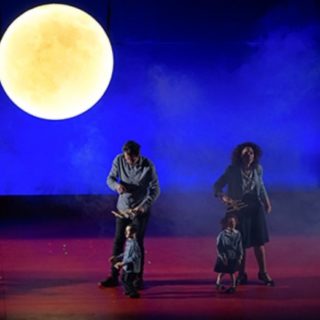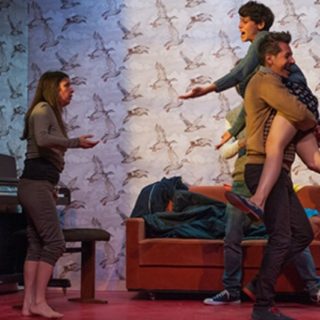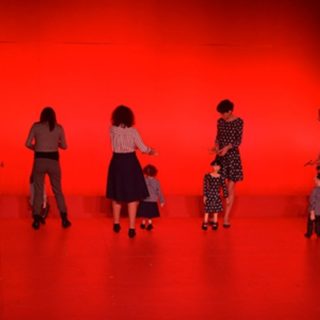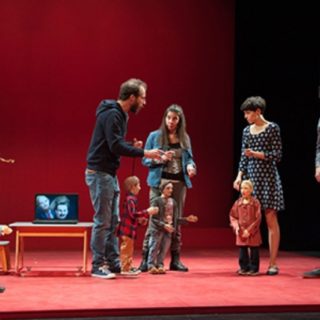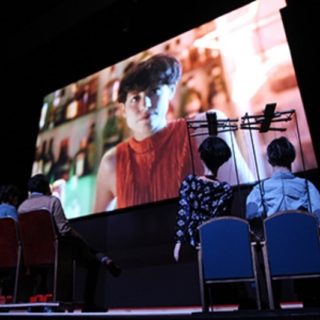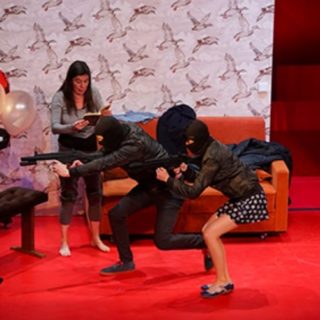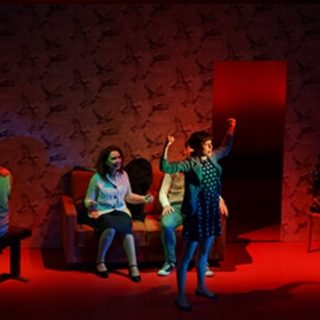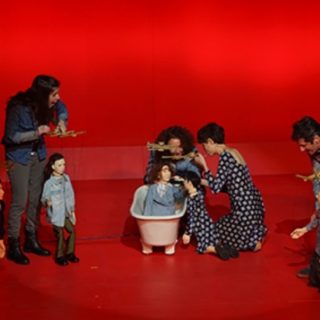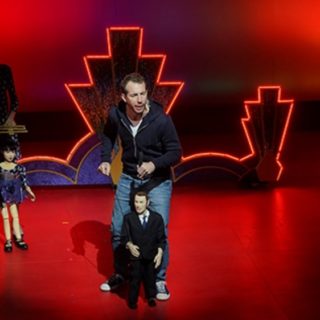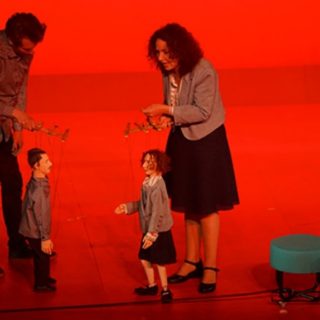BURNING BRIGHT IN THE FOREST OF THE NIGHT
Arde brillante en los bosques de la noche / Burning bright in the forest of the night is focused on the 100 anniversary of the Russian Revolution and some of its artistic and political resonances in contemporary world. It address as source of inspiration the figure of Alexandra Kollontai, the soviet revolutionary and feminist, and some of her concerns about freedom, the body, sexuality and how capitalist society shapes woman identity.
The play is composed by three parts.
The first one is a puppet show. The puppets are an exact replica of the actors who manipulate them. The story is about a University professor who teaches russian revolution in Buenos Aires nowadays and she feels that her life is much more conventional and bourgeois than what she teaches, she also have some bitter issues with her husband and daughter. At the peak of her conflict with herself some friends invites her to go out, they go to the theater.
At this point a real theater play starts. The play is performed by the same actors who have been manipulating the puppets. The story of the play is about a young european who joined a revolutionary struggle in Latinamerica 10 years ago and now she returns to her home to find out how much things have changed since and that she cannot adapt to live there anymore. One day a friend invites her to go to see a movie.
At this point a movie starts. The movie is starred by the same actors of the theater play and the puppet show. The movie is about a TV journalist who works in a political show. She gets an unexpected promotion and to celebrate it she goes on a trip to Misiones, in the north of Argentina, where young and poor decendents of russians –
emigrated to the country in the aftermath of the soviet revolution – works as strippers and prostitute themselves to middle class women.
Each story has a life-changing influence in the other story. After the movie is over we go back to the theater play and we see how to watch that movie has transformed the revolutionary person and how she will decide to change her life because of that. Once the theater play has finished we go back to the puppet show and we see in which way that story has influenced the one of the University professor.
As a sort of Russian doll of fictions inside fictions, taking some formal ideas from the russian avant garde, placing the body and its representations in conflict, researching about the validity of some ideas from biopolitics and the political control of the body by power, the play tries to address the relevance of some specific ideas from the russian revolution 100 year after 1917 and the still relevant Lenin question: “What is to be done?”
2-
This year marks the hundredth anniversary of the Russian Revolution
of 1917. It is hard to ignore the similarity of many of the problems faced by the majority of the world’s population a hundred years ago to those we face today. It may be a simplistic view, but the conflicts arising from inequality, redistribution of wealth, workers’ rights and the fight against new forms of exploitation seem just as relevant nowadays as they were in 1917.
“Arde brillante” is a work composed of stories centred on the lives of three women of today, whose experiences are intersected by the Russian Revolution in very different ways.
Art, like revolutions, creates possible worlds which were not visible before. Are we able to invoke – with a suitable dose of humility –the explosive artistic avant-garde which followed the Russian Revolution and which aspired to recount things that could not be recounted any other way? Creation of mega-fictions as utopian action.
The characters of “Arde brillante…” are transformed by watching the lives
of other people in works of art, thinking about them, and starting to
wonder whether they themselves want to be spectators or protagonists
in History. In a world filled with terrible injustices, the possibility for
them of a radical change, in society and in their own lives, like a crouching
tiger which bursts into flames, continues to illuminate and give
hope in the darkest places.
Text & Direction: Mariano Pensotti
Cast: Susana Pampín, Laura López Moyano, Inés Efrón, Esteban Bigliardi, Patricio
Aramburu
Set & Costume Designer: Mariana Tirantte
Music: Diego Vainer
Lights: Alejandro Le Roux
Production: Florencia Wasser / Grupo Marea
Stage Assistances: Malena Juanatey, Tatiana Mladineo
Set Assistance: Gonzalo Córdoba Estévez, Tatiana Mladineo, Luciana Peralta
Direction Assistance: Juan Schnitman
A commission and co-production by HAU Hebbel am Ufer.
Co-production: Complejo Teatral de Buenos Aires, Kunstenfestivaldesarts (Brussels), Maria Matos Teatro Municipal / House on Fire with support by the Cultural Programme of the European Union.
Collaboration: el Cultural San Martín
Created in the frame of “Utopian Realities”, a co-production of HAU Hebbel am Ufer and Haus der Kulturen der Welt as part of “100 Years of Now”, curated by HAU Hebbel am Ufer. Funded by the Federal Government Commissioner for Culture and the Media.
